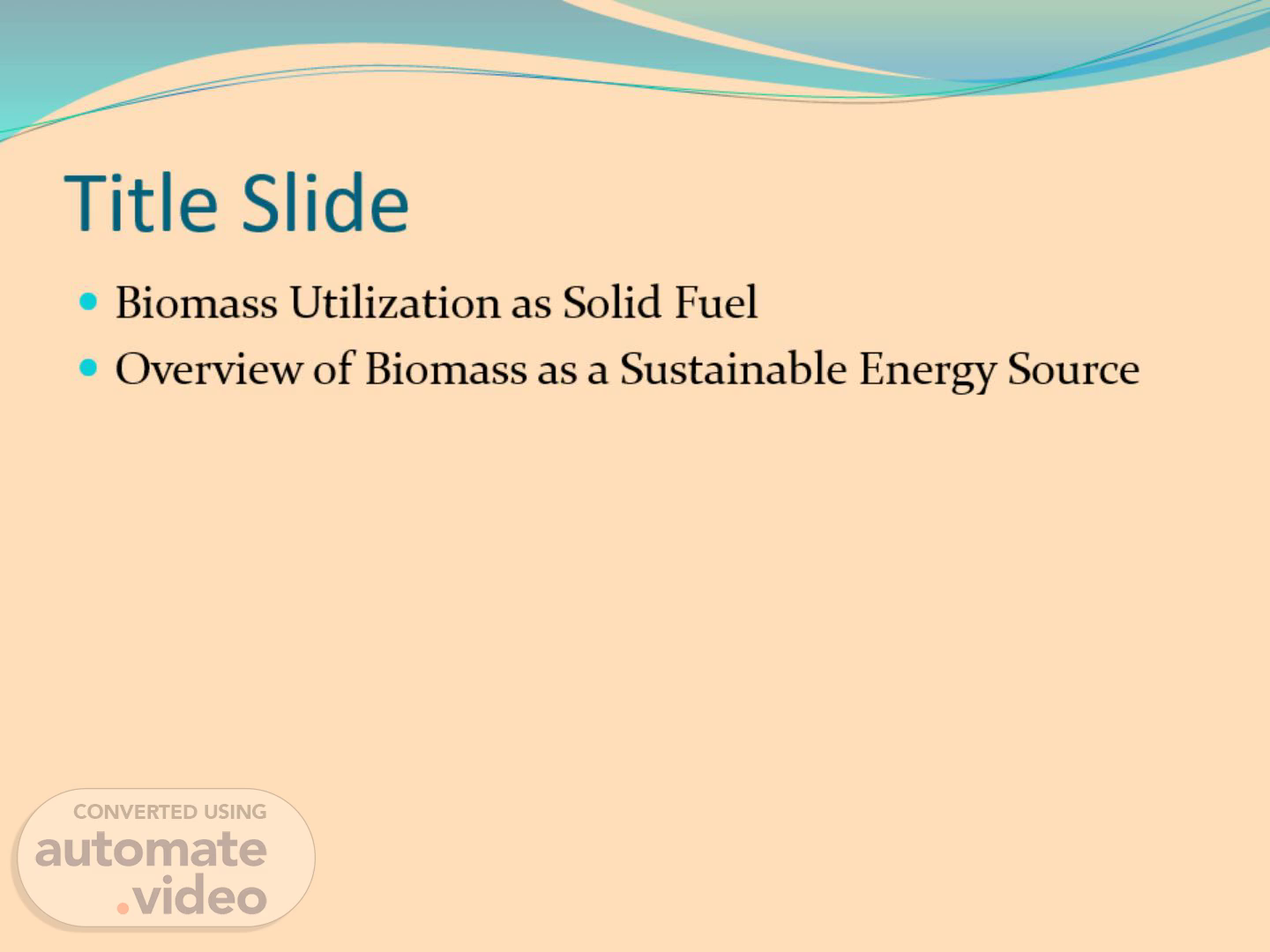Scene 1 (0s)
Title Slide. Biomass Utilization as Solid Fuel Overview of Biomass as a Sustainable Energy Source.
Scene 2 (8s)
What is Biomass?. Definition and Explanation Biomass refers to organic materials derived from plants and animals, used as a renewable energy source..
Scene 3 (18s)
Sources of Biomass. Types of Biomass 1. Agricultural Residues (e.g., rice straw) 2. Forestry Residues 3. Animal Manure 4. Industrial Waste 5. Energy Crops.
Scene 4 (30s)
Why Use Biomass?. Benefits of Biomass Utilization 1. Reduces Carbon Emissions 2. Renewable Source of Energy 3. Utilizes Waste Products 4. Supports Rural Economies.
Scene 5 (41s)
Composition of Biomass. Key Components of Biomass 1. Cellulose 2. Hemicellulose 3. Lignin 4. Moisture Content.
Scene 6 (51s)
Biomass vs. Fossil Fuels. Comparison with Conventional Fuels 1. Carbon Neutrality 2. Renewable vs. Non-renewable 3. Emissions Profile.
Scene 7 (1m 1s)
Biomass Conversion Technologies. Methods of Converting Biomass 1. Combustion 2. Gasification 3. Pyrolysis 4. Anaerobic Digestion.
Scene 8 (1m 11s)
Combustion Process. Direct Burning for Heat Energy Overview of how biomass is burned to produce heat and energy..
Scene 9 (1m 20s)
Gasification Process. Converting Biomass into Syngas Explains how biomass is converted into synthetic gas for use as fuel..
Scene 10 (1m 29s)
Pyrolysis Process. Thermal Decomposition of Biomass Description of the process that converts biomass into bio-oil, gas, and char without oxygen..
Scene 11 (1m 39s)
Anaerobic Digestion. Production of Biogas Describes how organic matter decomposes without oxygen to produce biogas and digestate..
Scene 12 (1m 49s)
Biomass as a Solid Fuel. Characteristics of Solid Biomass Fuels 1. Densified Pellets 2. Briquettes 3. Chips.
Scene 13 (1m 58s)
Biomass Fired Furnace/Boiler. Biomass Fired Furnace/Boiler Overview: The biomass fired furnace or boiler is a device that burns biomass fuel to produce heat for electricity generation or industrial processes. 1. Process: - Biomass is fed into the furnace or boiler where it is burned to produce heat. - The combustion process involves high temperatures (typically 800-1,000°C) to release thermal energy. - Heat is transferred to water or air to produce steam or hot air, which is used in power generation or heating. 2. Fuel Characteristics: - Biomass fuels used in these boilers include wood chips, agricultural residues (e.g., rice straw), and dedicated energy crops. - Characteristics such as calorific value, moisture content, ash content, and bulk density influence combustion efficiency..
Scene 14 (2m 32s)
3. Fuel Types: - Wood-based fuels: Wood chips, wood pellets, sawdust. - Agricultural residues: Rice straw, wheat straw, corn stover. - Energy crops: Miscanthus, switchgrass, and fast-growing trees. 4. Air-Fuel Ratio: - The air-fuel ratio is critical for efficient combustion. - It must be balanced to ensure complete combustion, minimize emissions, and maximize heat production. - Typically, the air-fuel ratio is 4:1 to 6:1 for biomass furnaces. 5. Other Aspects: - Combustion Efficiency: Optimized by controlling fuel particle size and moisture content. - Ash Management: Ash produced by burning biomass needs to be removed periodically. - Environmental Impact: Biomass boilers can be carbon-neutral if managed properly.
